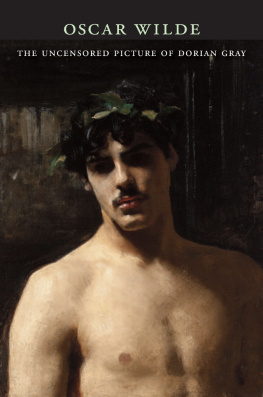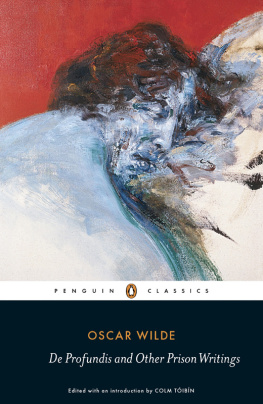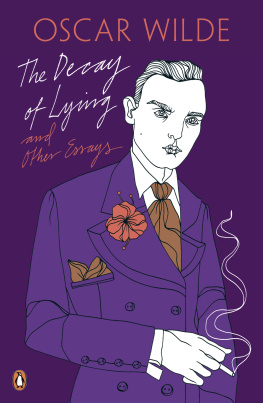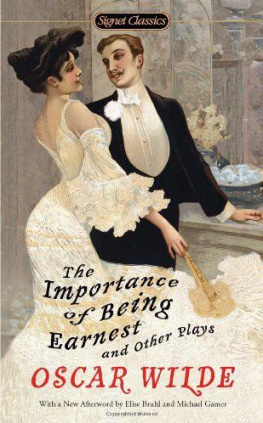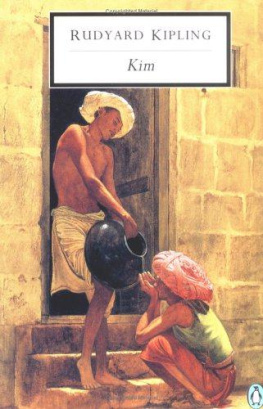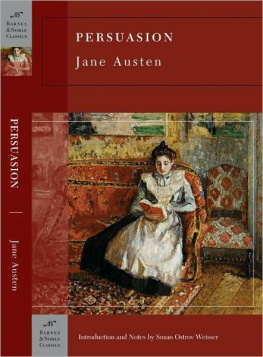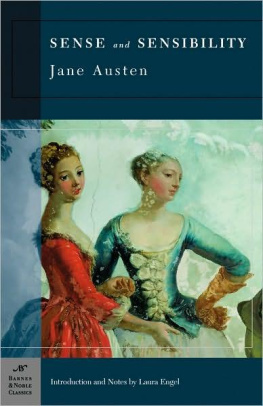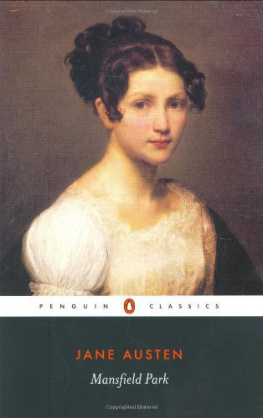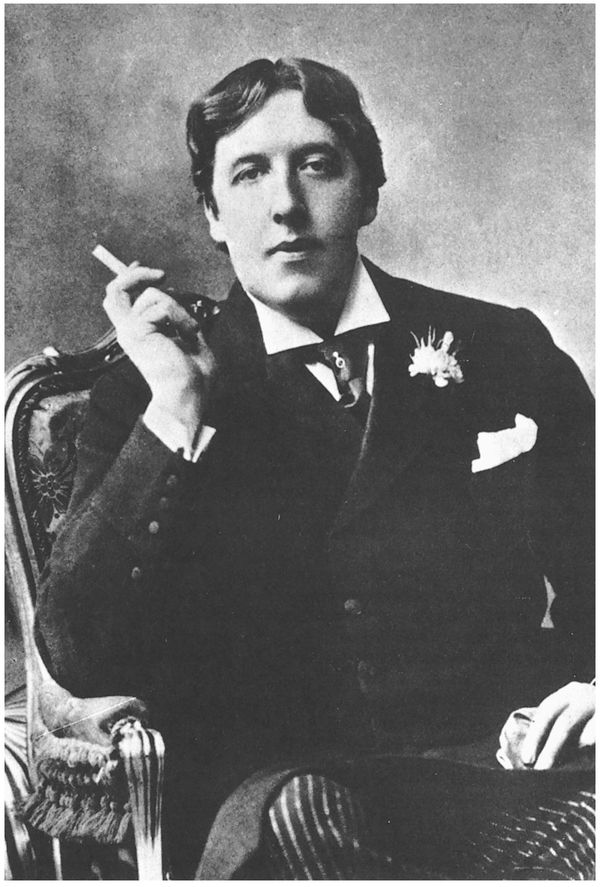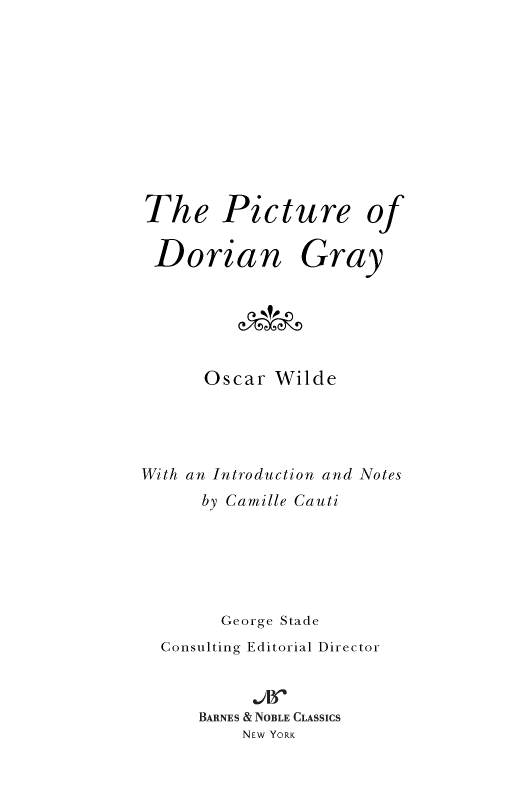
Table of Contents
From the Pages of
The Picture of Dorian Gray
All art is quite useless. (page 2)
There is only one thing in the world worse than being talked about, and that is not being talked about. (page 4)
Being natural is simply a pose, and the most irritating pose I know. (page 7)
She tried to found a salon, and only succeeded in opening a restaurant. (page 10)
I like persons better than principles, and I like persons with no principles better than anything else in the world. (page 11)
The only way to get rid of a temptation is to yield to it.
(page 21)
Beauty is a form of Geniusis higher, indeed, than Genius, as it needs no explanation. It is of the great facts of the world, like sunlight, or springtime, or the reflection in dark waters of that silver shell we call the moon. It cannot be questioned.
(page 24)
She crouched on the floor like a wounded thing, and Dorian Gray, with his beautiful eyes, looked down at her, and his chiseled lips curled in exquisite disdain. There is always something ridiculous about the emotion of people whom one has ceased to love. (page 92)
Life has always poppies in her hands. (page 105)
No theory of life seemed to him to be of any importance compared with life itself. (page 136)
Is insincerity such a terrible thing? I think not. It is merely a method by which we can multiply our personalities. (page 146)
Oscar Wilde, 1894This is the last photograph taken of Wilde before his trials.
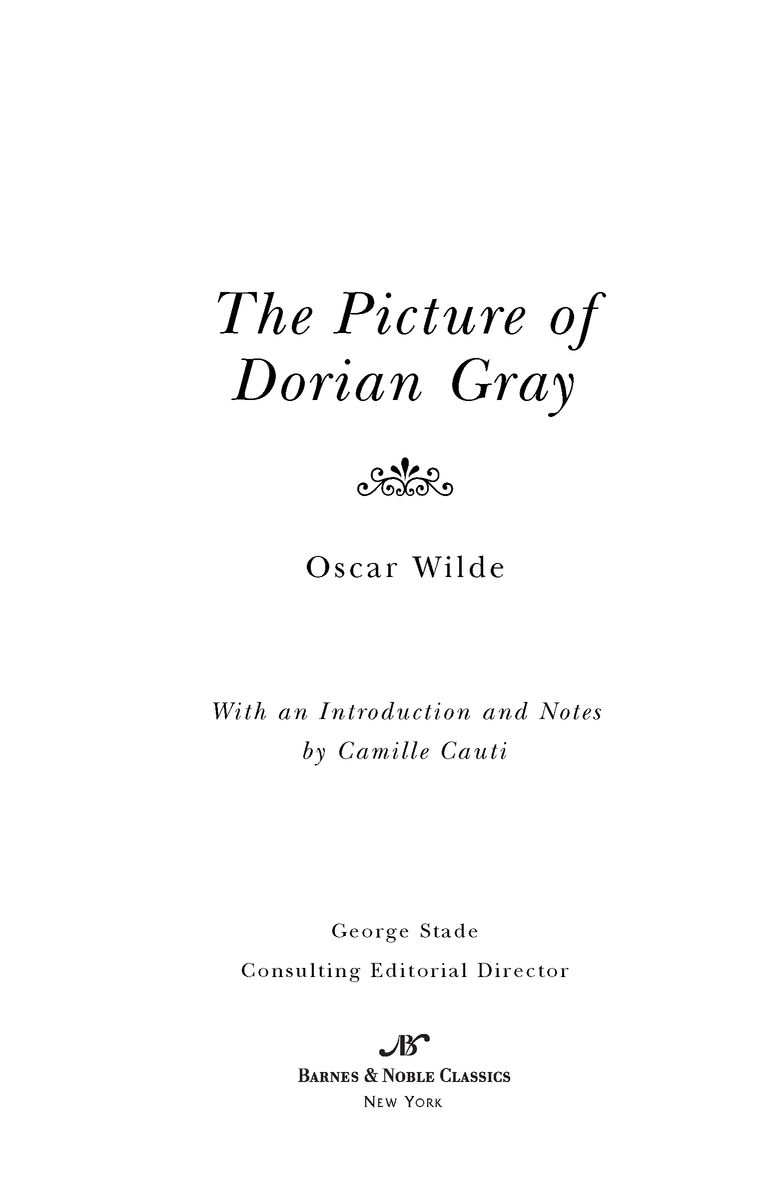
Oscar Wilde
Oscar Fingal OFlahertie Wills Wilde was born on Octo ber 16, 1854, to an intellectually prominent Dublin family. His father, Sir William Wilde, was a renowned physician, who was knighted for his work as medical adviser to the 1841 and 1851 Irish censuses; his mother, Lady Jane Francesca Elgee, was a poet and journalist. Wilde showed himself to be an exceptional student. While at the Royal School in Enniskillen, he took First Prize in classics. He continued his studies at Trinity College, Dublin, on scholarship, where he won high honors, including the Demyship Scholarship to Magdalen College, Oxford.
At Oxford, Wilde engaged in self-discovery, through both intellectual and personal pursuits. He fell under the influence of the Aesthetic philosophy of Walter Pater, a tutor and author who inspired Wilde to create art for the sake of art alone. It was during these years that Wilde developed a reputation as an eccentric and a foppish dresser who always had a flower in his lapel. Wilde won his first recognition as a writer when the university awarded him the Newdigate Prize for his poem Ravenna.
Wilde went from Oxford to London, where he published his first volume of verse, Poems, in 1881. From 1882 to 1884, he toured the United States, Ireland, and England giving a series of lectures on Aestheticism. In America, between speaking engagements, he met some of the great literary minds of the day, including Henry Wadsworth Longfellow, Oliver Wendell Holmes, and Walt Whitman. His first play, Vera, was staged in New York but did poorly. After his marriage to Constance Lloyd in 1884 and the birth of his two sons, Wilde began to make his way into the London theater, literary, and homosexual scenes. He published Intentions, a collection of dialogues on Aesthetic philosophy, in 1891, the year he met Lord Alfred Douglas, who became his lover and his ultimate downfall. Wilde soon produced several successful plays, including Lady Windermeres Fan (1892) and A Woman of No Importance (1893).
Wildes popularity was short-lived, however. In 1895, during the concurrent runs of his plays An Ideal Husband and The Importance of Being Earnest, he became the subject of a homosexual scandal that led him to withdraw all theater engagements and declare bankruptcy. Urged by many to flee the country rather than face a trial in which he would surely be found guilty, Wilde chose instead to remain in England. Arrested in 1895 and found guilty of homosexual offenses, Wilde was sentenced to two years hard labor and began serving time in Wandsworth prison. He was later transferred to the detention center in Reading Gaol, where he composed De Profundis, a dramatic monologue written as a letter to Lord Alfred Douglas that was published in 1905. Upon his release, Wilde retreated to the Continent, where he lived out the rest of his life under a pseudonym. He published his last work, The Ballad of Reading Gaol, in 1898 while living in exile.
During his lifetime, Wilde was most often the center of controversy. The Picture of Dorian Gray, which appeared as the lead story in Lippincotts Monthly Magazine on June 20, 1890, and was published in book form the next year, is considered to be Wildes most personal work. Scrutinized by critics who questioned its morality, the novel portrays the authors internal battles and arrives at the disturbing possibility that ugliness is the only reality. Oscar Wilde died penniless of cerebral meningitis in Paris on November 30, 1900. He is buried in Lachaise Cemetery, Paris.
The World of Oscar Wilde and
The Picture of Dorian Gray

| 1854 | Oscar Fingal OFlahertie Wills Wilde is born on Octo ber 16 in Dublin to William Wilde, a prominent oph thalmologist, and Jane Francesca Elgee, a renowned poet and journalist. |
| 1864 | Wilde enters the Portora Royal School in Enniskillen, where he excels, and subsequently takes First Prize in classics and Second Prize in drawing. |
| 1867 | On February 23 Wildes sister Isola dies of a sudden fever. Profoundly affected by the death, Wilde keeps a lock of her hair until the end of his life. |
| 1871 | Wilde enrolls as a Royal School Scholar at Trinity College, Dublin, where he earns the Foundation Schol arship (the highest honor bestowed on an under graduate) as well as the Berkeley Gold Medal for Greek and the Demyship Scholarship to Magdalen College, Oxford. |
| 1874 | As a student at Magdalen College, Wilde finds a mentor in Walter Pater, a tutor and writer whose works, along with those of the Pre-Raphaelites, inspire Wilde to sub scribe to the Aesthetic movement, which promotes art for arts sake. Wilde develops a reputation for his flam boyant mannerisms, including his dandyism and long hair. |
| 1876 | Wildes father dies. |
| 1878 | Wilde wins the Newdigate Prize for his poem Ravenna, as well as First In Greats by his examiners. Wildes eldest brother, Henry Wilson, dies. |
| 1879 | Upon graduation, Wilde moves to London with Frank Miles, a friend and portrait painter, and begins his writ ing career. |


